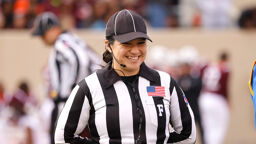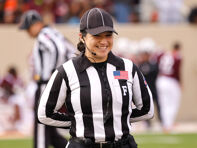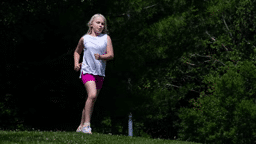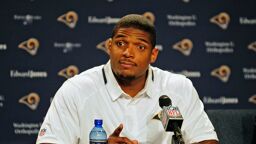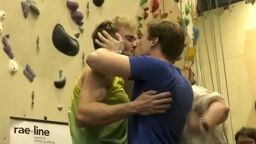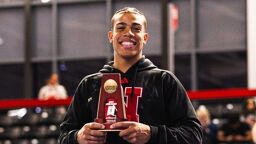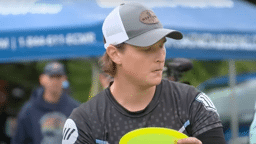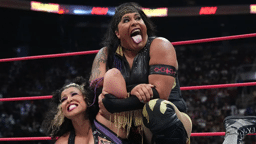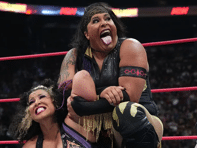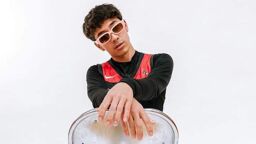 Must Reads
Must Reads 
2014 was a record breaking year for LGBTQ+ equality. The number of states with marriage equality nearly doubled, President Obama expanded employment protections through executive action, and in the sports movement we saw 109 people come out publicly. We should celebrate these accomplishments and share in the love we have built as a community.
Our work, however, is far from over. As we become more visible within athletic communities, additional challenges arise, shifting the conversation to be about more than visibility.
That is not to downplay the importance of visibility or cheapen the coming out process that many athletes, coaches, administrators, and fans have gone through, are going through, and will continue to go through. Those journeys are of the utmost importance, having greatly shaped our movement for LGBTQ+ equality in sports. As progress occurs, however, we must widen the conversational horizons of our movement.
In the honor of the new year (yes, even in February), here are four conversations we need to start having within the LGBTQ+ sports equality movement:
1. The Aftermath of coming out
Most LGBTQ+ novels I have read conclude in a giant closet door kicking, rainbow cape flying, glitter raining moment. The end of the story is being out, proud, and free. And while that is certainly the end of one journey, it is the beginning of a wholly different one.
The same is true for athletes. We tell stories of wrestling and challenge, culminating in the coming out triumph. Those stories absolutely should be lifted up in celebration. We also need to be talking about what happens after those initial steps. Being out can be exhilarating and it can also be immensely challenging. Athletes need continuing support from their teammates, administrators, and coaches.
Coming out can be a wonderful experience, and it also causes ripple effects. As a high school basketball player, I came out to my teammates, but I never really thought about what that meant for me as I explored playing in college. I was also the only out athlete at my college during that time, and I did not know how to ask for or access support. My isolation was one of the contributing factors to me hanging up my sneakers for good.
So many athletes may be in the same boat, and we, as a movement, must start discussing how we can best support them through the feelings of isolation they may feel, at every level of play. Former athletes have also documented the difficulties transitioning from out player to out coach. There is also the reality that not everyone has a positive experience after they come out. We need to talk about supporting LGBTQ+ athletes with all types of experiences, positive, negative, and everywhere in between.
2. The Intersectional Existence of LGBTQ+ Athletes, Coaches, and Administrators
No person is simply one identity. We are all composed of multiple identities, decisions, thoughts and feelings. We are complex, multifaceted people. Holding an LGBTQ+ identity does not mean the same thing for everyone who claims one or more of those letters.
My lesbian identity is heavily informed by my gender expression and my race, and Josh Sanders speaks about the importance his faith as a gay man. When we focus solely on the athletic existence of coaches, administrators and student athletes, we are tacitly advocating for and complicit in the erasure of the identities and experiences held by members of the athletic community. Inclusion does not just mean the lack of homophobic language and policies.
A space free from homophobia does not guarantee the affirmation of my Blackness, gender expression, or agnostic beliefs. For LGBTQ+ athletes, coaches, and administrators to be truly affirmed, we must work to eradicate all forms of oppression and the ways in which they manifest themselves in the locker room. Working on homophobia is a great start, but we must do more.
3. Attention to Trans, Genderqueer, and Gender Non-Conforming Athletes
One step in doing more is actively engaging in a conversation that is inclusive of trans, genderqueer, and gender non-conforming athletes. Too often trans folks are tacked onto our conversations as afterthoughts, or simply not included at all. As we provide platforms for many athletes, coaches, and administrators to discuss their experiences regarding homophobia and biphobia, we must acknowledge the damaging and enduring existence of transphobia as well.
A crucial point to growing in this area is to acknowledge where we, as movement leaders and participants, fall short. I understand that language changes, and some concepts are more difficult to understand than others, but it is our duty to educate ourselves so that we may better embrace our siblings of the trans, genderqueer, and gender non-conforming communities.
4. Coming Out is a Process and also a Privilege
Coming Out is not a discrete moment, it is continuous and complicated. I have been out for roughly seven years, but it has not always been easy. I told myself that I was interested in women when I was 14, and then promptly ignored it for two years. I re-came out to myself and my friends in September 2008, but I didn’t come out to my parents until four months. Pin pointing when I came out is like trying to solve a overly complex word problem in pre-algebra.
Despite my internal gymnastics, however, I never truly feared telling my parents. My parents held my hand as I dragged them to the boys’ section to go back-to-school shopping in third grade. It was my father who scolded me when I used homophobic language growing up, and my mother begs me to bring her rainbow anything whenever I go to Pride parades. As a queer person, I have been privileged to be in a position to come out at a young age, do the work that I do unhindered, and sign my name on every piece of LGBTQ focused writing I put on the internet.
As we encourage LGBTQ+ athletes to come out, it is also important to realize that fear is very real, and is sometimes warranted, as up to 40% of homeless youth identify as LGBTQ. Though we have seen tremendous movement forward in the last few years, it is always important to remember that every LGBTQ+ person has their own process, and not everyone is in a place to privately tell their story, let alone publicly.
There are so many more conversations than the ones I have highlighted here, but the important thing is that we are more ready than ever to have nuanced conversations within our movement. As a (belated) New Year’s Resolution, I hope we can be intentional with widening the conversation beyond our comfort zones, and continue to create meaningful, sustainable change.
Katie Barnes is a writer, activist, and contributor to Outsports. They have been active in LGBTQ+ organizing since college, and continue that work through serving as the Network Director for GO! Athletes, the President of the Campus Pride Advisory Board, and collaborating on special projects with various members and organizations of the LGBT Sports Coalition. Katie is currently finishing their M.S. in Student Affairs in Higher Education at Miami University (OH). Read more of Katie’s thoughts on their blog: www.katiebarnes3.wordpress.com. You can follow Katie on Twitter at @katie_barnes3, or email them at [email protected]
